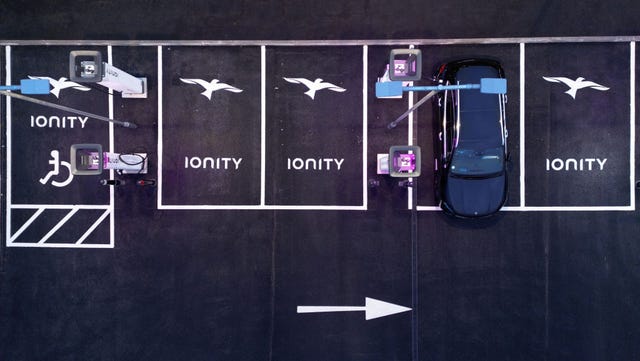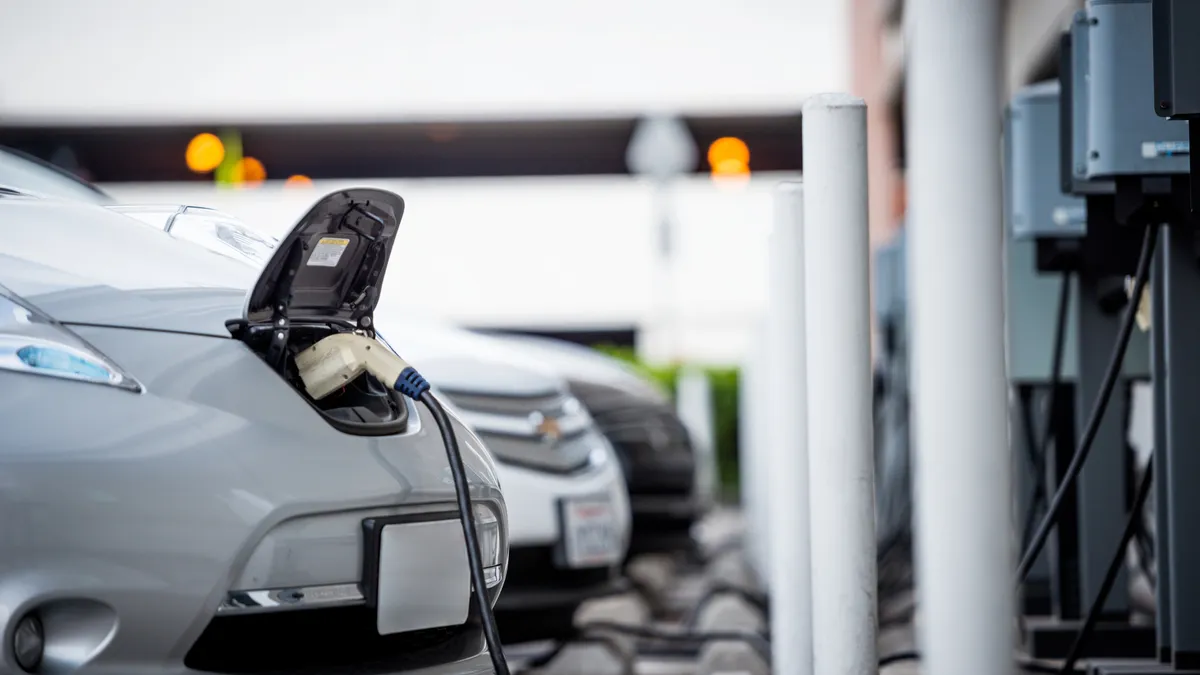Leading EV Charging News: Key Updates on Facilities and Technology

Recent Developments in Fast-Charging Innovation

Furthermore, innovations in battery technology, including enhanced thermal monitoring systems and higher power thickness batteries, complement fast-charging capacities. These developments reduce the threat of battery degradation during quick charging, ensuring durability and efficiency for EV proprietors.
Additionally, the combination of clever billing solutions is improving customer experience, enabling real-time monitoring and vibrant rates versions. EV Charging news. This flexibility enables motorists to optimize charging expenses and times based upon grid need
As car manufacturers remain to buy fast-charging networks, the collaboration between industry stakeholders is important. Collaborations in between billing terminal providers and vehicle suppliers are paving the way for extensive coverage, eventually promoting a much more robust EV environment. These innovations are pivotal in supporting the transition to lasting transport.
Federal Government Initiatives for Charging Growth
Government initiatives play a vital role in the expansion of electrical lorry (EV) billing framework, facilitating the change to lasting transport. Different federal and state programs are being implemented to enhance billing access, minimize the monetary concern on consumers, and promote the fostering of electrical cars.
Notably, the united state federal government has assigned significant financing with the Infrastructure Financial Investment and Jobs Act, which sets aside $7.5 billion for EV charging network development throughout the nation. This financing is intended at deploying hundreds of brand-new charging terminals, especially in underserved areas, therefore resolving array stress and anxiety amongst prospective EV buyers.
Additionally, many states are passing legislation to simplify the allowing procedure for billing station installments, which is crucial for accelerating deployment. Motivations such as tax credit ratings and rebates for both consumers and businesses are also being introduced to motivate the installation of billing infrastructure.
Moreover, public-private partnerships are increasingly ending up being a focus, leveraging private investment to match federal government funding. These initiatives emphasize a collaborative approach necessary for building a reliable and thorough EV billing network, inevitably adding to a greener and even more lasting future.
Innovative Battery Solutions Enhancing Efficiency
Revolutionizing the landscape of electric car (EV) innovation, cutting-edge battery options are significantly enhancing performance and performance. Breakthroughs in battery chemistry, particularly with lithium-sulfur and solid-state batteries, are resulting in enhanced power thickness, which permits longer ranges and faster charging times. These new battery types have the potential to outshine conventional lithium-ion batteries by offering higher capacities while lowering weight, consequently improving general vehicle performance.
In addition, developments in battery management systems (BMS) are maximizing power usage and extending battery life-span. Intelligent formulas keep track of battery health and wellness and efficiency, allowing real-time changes to billing and releasing processes. This not only enhances the effectiveness of the battery however likewise makes sure a much more sustainable and dependable power source for EVs.
Moreover, the integration of recycling innovations is attending to the environmental influence of battery manufacturing and disposal. Innovations in second-life applications for EV batteries are facilitating their usage in power storage systems, adding to a round economic climate.
As these ingenious battery solutions remain to progress, they guarantee to change the EV market, making electrical cars more appealing and obtainable to a wider audience while supporting global sustainability objectives.

Collaboration Between Automakers and Charging Networks
Acknowledging the important demand for a durable billing framework, car manufacturers are increasingly collaborating pop over to these guys with charging network companies to improve the EV possession experience (EV Charging news). These partnerships aim to develop a seamless billing ecosystem that benefits customers and supports the change to electric lorries
Significant auto brand names are signing up with pressures with well established charging networks to expand their charging terminal insurance coverage, making certain vehicle drivers have accessibility to reliable and hassle-free billing choices. Partnerships with networks like ChargePoint and Electrify America permit car manufacturers to integrate billing options directly into their vehicles' navigating systems, directing users to the closest terminals and giving real-time schedule updates.
In addition, these partnerships typically result in the growth of fast-charging innovations that considerably reduce the moment needed to reenergize an EV. By pooling sources and expertise, car manufacturers and charging networks can introduce much faster, producing solutions that satisfy the growing demand for electric mobility.
In enhancement, joint campaigns may likewise bring about even more standardized charging protocols, which can ease consumer confusion and advertise wider EV fostering. Generally, these strategic partnerships are pivotal in constructing a effective and straightforward billing infrastructure that fulfills the needs of an increasing electric automobile market.
Challenges Facing EV Billing Facilities
As the electric vehicle market proceeds to grow, a number of obstacles are surfacing that prevent the development of an extensive charging facilities. Among the key barriers is the not enough number of charging stations, particularly in rural and underserved metropolitan areas. This space produces array anxiousness among potential EV buyers, discouraging them from making the switch.
Furthermore, the lack of standardization accountable technology makes complex the framework landscape. Variations in plug types and billing speeds can produce complication for customers and increase operational complexities for billing network operators. In addition, the combination of charging stations into existing electric grids postures substantial obstacles. Many regions encounter capability restrictions, requiring substantial financial investments in grid upgrades to fit enhanced demand.
Another pushing concern is the high expense associated with the installation and maintenance of billing stations, which can be a barrier for both public entities and exclusive businesses. Finally, regulative obstacles and zoning constraints can postpone the deployment of find out this here charging framework, hampering progression in increasing important solutions. Attending to these difficulties will be vital for cultivating a durable EV environment that sustains the transition to lasting transport.
Verdict
To conclude, the continuous developments in EV billing innovation, sustained by significant federal government initiatives and innovative battery options, are vital for see page the expansion and performance of electric lorry facilities. Collaborations between car manufacturers and charging service providers additionally improve terminal insurance coverage, addressing the expanding demand for accessible billing options. Regardless of challenges that continue within the EV billing landscape, these developments symbolize a favorable trajectory towards an extra lasting and efficient electric car environment.
Developments in billing infrastructure have actually led to the development of ultra-fast battery chargers capable of providing up to 350 kW of power, dramatically minimizing billing times. Variations in plug kinds and charging rates can develop confusion for customers and raise functional complexities for billing network drivers.In conclusion, the ongoing improvements in EV charging technology, supported by considerable federal government efforts and innovative battery remedies, are important for the growth and performance of electrical automobile framework. Collaborations in between automakers and billing carriers further boost terminal coverage, dealing with the expanding need for easily accessible charging alternatives. Despite difficulties that persist within the EV charging landscape, these growths represent a positive trajectory towards an extra sustainable and effective electrical car community.